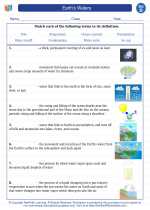Weathering
Weathering is the process by which rocks and minerals are broken down into smaller pieces. This can happen through physical, chemical, or biological processes, and it plays a key role in shaping the Earth's surface over time.
Types of Weathering
1. Mechanical Weathering: This type of weathering involves the physical breakdown of rocks into smaller pieces without changing their chemical composition. Examples include frost wedging, abrasion, and root wedging.
2. Chemical Weathering: Chemical weathering occurs when the minerals in rocks are altered or dissolved by chemical reactions. Common processes include dissolution, oxidation, and hydrolysis.
3. Biological Weathering: Biological weathering is caused by the actions of living organisms, such as plant roots growing into cracks in rocks or burrowing animals breaking apart rock material.
Factors Affecting Weathering
Several factors can influence the rate and extent of weathering:
- Climate: Weathering tends to occur more rapidly in areas with high temperatures and abundant rainfall.
- Rock Type: Some types of rocks are more resistant to weathering than others due to their mineral composition and structure.
- Topography: The slope and orientation of the land can affect the exposure of rocks to weathering agents such as water and wind.
- Biological Activity: The presence of plants, animals, and microorganisms can contribute to the breakdown of rocks through biological weathering processes.
Effects of Weathering
Weathering has significant effects on the Earth's surface, including:
- Soil Formation: Weathering contributes to the breakdown of rocks and the formation of soil, which is essential for supporting plant life.
- Landscape Formation: Weathering processes help create landforms such as valleys, canyons, and coastlines by shaping and sculpting the Earth's surface.
- Mineral Recycling: Weathering releases nutrients from rocks, making them available for use by plants and other organisms.
Study Tips
To study weathering effectively, consider the following tips:
- Review the different types of weathering and examples of each process.
- Understand the factors that influence weathering and how they interact with one another.
- Learn about the effects of weathering on the landscape and the environment.
- Use diagrams and visuals to understand the processes and effects of weathering.
- Practice identifying examples of weathering in real-world situations, such as observing weathered rocks and soils in your local area.
By understanding the processes and effects of weathering, you can gain a deeper appreciation for how the Earth's surface is continually shaped and transformed over time.
.◂Science Worksheets and Study Guides Fourth Grade. Earth's Waters

 Worksheet/Answer key
Worksheet/Answer key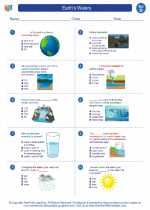
 Worksheet/Answer key
Worksheet/Answer key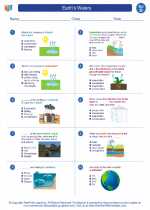
 Worksheet/Answer key
Worksheet/Answer key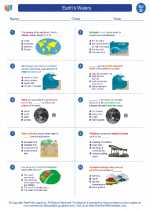
 Vocabulary/Answer key
Vocabulary/Answer key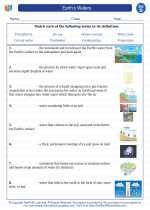
 Vocabulary/Answer key
Vocabulary/Answer key